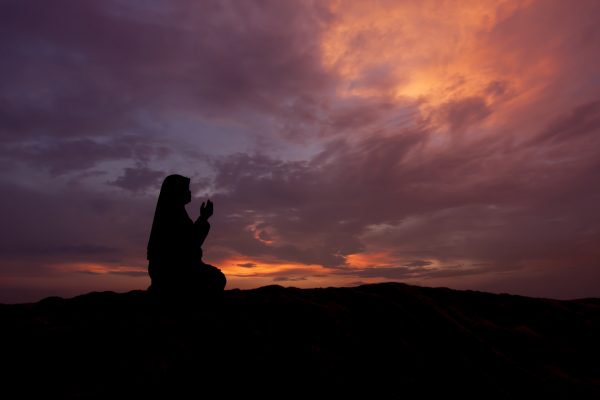This association of Blackness and Arabness is seen as well among the Hashemites whose Arabness is unquestionable.
This association of Blackness and Arabness is seen as well among the Hashemites whose Arabness is unquestionable.
This association of Blackness and Arabness is seen as well among the Hashemites whose Arabness is unquestionable.
During Black History Month, many give more attention to retelling the narratives of Black excellence to bring more balance to the historical and continual negative stereotyping of Blackness and the erasure of the positive contributions within Western societies of Black people. As anti-Blackness and ignorance, willful at times, of Black excellence persists within Western societies in general, the same also exists in different iterations within Muslims. Among Muslims who are not Black, such attitudes can display themselves as overt hostility towards Blacks to more subtle displays. As it pertains to Muslims who are Black, self-loathing and inferiority complexes can exist which include trusting non-Blacks or finding them, without displaying merit, to be more Islamically authentic than persons or sub-communities who are Black. Hence, conveying accurate, positive information about Blackness within the Islamic historical narrative is extremely important.
Within this endeavor of addressing the issues of anti-Blackness and Black self-loathing among Muslims in the West and beyond, Sidi Ahmad Mubarak (may Allah preserve him), an African American who attended Al-Azhar University, and I co-authored two publications. The first of those which was released in February 2017 is entitled Centering Black Narrative: Black Muslim Nobles Among the Early Pious Muslims, and the second which was released in November 2018 is entitled Centering Black Narrative: Ahl al-Bayt, Blackness & Africa. The first volume has the focus of clarifying how Blackness was understood by Arabs 14 centuries ago in comparison to how the racial construction of Black is understood today. Volume one also highlights some personalities among the Prophet’s companions and the second generation of Muslims who today would be phenotypically considered to be Black. The second volume expands from the first work with the additions of highlighting the merits of the progeny of the Prophet (prayers and peace be upon him & his family) as well as highlighting Hashimites who were also Black according to physical description in skin tone or complexion and hair texture as well as Hashimites who migrated to Africa.
Although such discourses are not numerous within the Islamic scholarly tradition, there is precedence for such information being written about. The first such treatise that is in survival today on this subject was written by the Mu’tazilite scholar al-Jahiz which was titled, in a reactionary form in response to anti-Blackness existing in the time of the Abbasids, Fakhr as-Sudan ‘ala al-Baydan (The Glory of the Blacks Over the Whites). Other books which were later written pertaining to this subject were Tanwir al-Ghabash fi Fadl as-Sudan wa al-Habash (The Clarification for the Ignorant Regarding the Merit of the Blacks and Abyssinians) written by Hanbali scholar ibn al-Jawzi and Raf’ Sha’n al-Hubshan (Raising the Importance of the Abyssinian) by Shafi’i polymath as-Suyuti. Before delving into a few details about specific personalities, it is important to define what is meant by Blackness within this discussion.
Defining Blackness
Blackness and Arabness have never been mutually exclusive. This is one of the biggest misperceptions that we tackled in volume one. As the construct of a Black as race today is based more upon arbitrary percentages of Sub-Saharan African lineage and melanin content, Blackness among the ancient Arabs was seen more as a marker of civilizational proximity, Arabs closeness to the Horn of Africa specifically, as well as melanin context in comparison to others that were geographically farther away. In the famous Arabic lexicon Lisan al-Arab written by ibn Manzur, he noted that Arabs were predominately known to be brown and dark brown in skin color whereas the Romans and the Persians were known to be white and reddish (1). Relating to civilizational proximity and Blackness, the Shafi’i scholar an-Nawawi commented that the hadith “I was sent to the Ahmar (Red or White person) and the Aswad (Black)” meant sent to the non-Arab and to the Arab (2). Hence Whiteness was understood as non-Arab within this context.
This association of Blackness and Arabness is seen as well among the Hashemites whose Arabness is unquestionable. It is narrated that the Abbasid tyrant al-Mutawakkil, who infamously destroyed the burial site of Imam al-Husayn bin Ali bin Talib (peace be upon him) at Karbala, used to verbally insult the Hashemites. Yahya bin Umar bin al-Husayn bin Zayd bin Ali bin al-Husayn bin Ali bin Abi Talib (may Allah’s blessings be upon them), a sayyid described as having dark brown skin who was one of those insulted by al-Mutawakkil, led an uprising against Abbasid tyranny. Relating to the insults against the Hashemites, the prolific poet ibn ar-Rumi composed a famous poem known as Jiymiyyah to address al-Mutawakkil’s insults:
You insult [the descendants of the Prophet Muhammad] due to their blackness
While they are pure Arabs with black complextion.
However, you are blue [eyed]
The Roman people have embellished your faces with their color. (3)
The Abbasid sultans preferred having children with white women which over generations lightened their skin color compared to earlier Arabs.
As the subject of Blackness and Arabness not having been mutual exclusive is an important historical point just as there are Black Arabs today stretching from Mauretania to Sudan, we highlighted that there were more Black companions than just Bilal (may Allah be pleased with him). Although Bilal is significantly important within Islamic history, we did not devote a chapter to him not only because he is familiar to most Muslims but also because he has to a certain extended been tokenized as the one Black companion. I had personally heard of enough of the nonsense of “We’re not racists because we love Bilal” excuses after having heard overtly anti-Black statements coming out of Muslims’ mouths. Of course, that’s akin to saying, “Some of my best friends are Black.” Although we did not write about Bilal, we did write about his mother Hamamah al-Habashiyyah (may Allah be blessed with her), who was born in Abyssinia as a free woman but was later enslaved after the defeat of Abraha and the Companions of the Elephant – the demise of the African army which attempted to conquer Makkah is described in the 105th chapter of al-Quran. Hamamah became a Muslim in Makkah and was tortured as her son was tortured (4). She also had a daughter among the companions named Ghufayrah bint Rabah (may Allah be pleased with her), her name in Arabic meaning one who seeks the forgiveness of Allah (Mighty & Sublime) often.
Regarding the imams from the Prophet’s progeny, several of them had African mothers. Our research also clearly highlighted that the depictions showing the 12 imams as resembling light skinned Persians are grossly inaccurate. Of these imams, Musa al-Kazim bin Imam Ja’far as-Sadiq bin Muhammad al-Baqir bin Ali as-Sajjad bin al-Husayn bin Ali bin Abi Talib (may Allah’s blessings be upon them) was described as Aswad (Black) in color (5). Subsequent imams after him from his son Ali ar-Rida to great-great grandson al-Hasan al-Askari were described in varying narrations as being dark in skin color.
Discussing this subject in no way should be equated with trying to make Blackness into an idol to be worshipped. Far from the case. But going back to the objectives for writing these books to begin with, we hope to chip away at misconceptions which lead to anti-Blackness and internalized loathing of Blackness. Arabness is based upon paternal lineage and a connection to Arabic language and is not a race as we view race today. Thus, Blackness and Arabness should not be seen as identities completely severed from one another historically. If Muslims become educated more about the Awliya (saintly people) and realized that many of them would phenotypically look like the average Black man walking down the streets of London or New York City, perhaps that may help at chipping away at interracial and intraracial anti-Black sentiments which exist in varying degrees within Muslim communities in the West.
Sources
- Ibn Manzur, Lisan al-‘Arab, Volume 4, Page 209
- An-Nawawi, Sharh Sahih Muslim, No. 520
- Al-Asbahani, Maqtil at-Talibin, Page 428
- Ibn Hajar al-‘Asqalani, Al-Isbah fi Tamyiz as-Sahabah, No. 11102
- Ibn ‘Inabah, Kitab ‘Umdah at-Talib fi Ansab Aali Abi Talib, Page 156
You can buy Centering Black Narrative: Black Muslim Nobles Among the Early Pious Muslims here, and Centering Black Narrative: Ahl al-Bayt, Blackness & Africa here.





